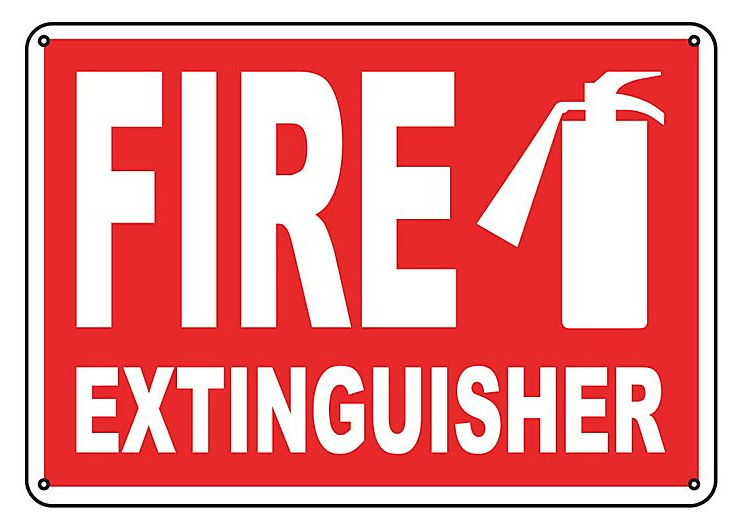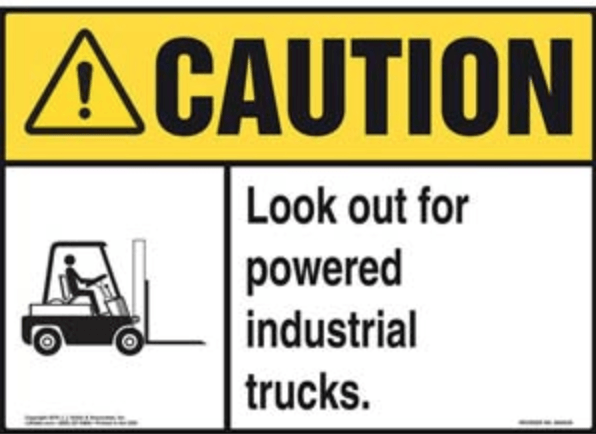Workplace Safety Signage Guide
OSHA has set requirements for the design of the signs –1910.145(d) and exactly when safety signs must be displayed- 1910.145(f)(4)(vi). In this post, we’re going to examine exactly what those and a few other requirements mean to you.
Proper facility signage can save more than just a life. Concise and consistent signs make it simple for employees and guests to easily identify hazards. This reduces workplace injuries, promotes safety awareness, and increases the effectiveness of your business. Accidents detract from productivity and schedules and can have high costs; by way of medical fees, legal fees, and regulatory fines. Ensure your safety signs are compliant now, so you won’t regret it later.
Choosing Signs
There are three primary sign categories for compliance. Here’s a breakdown of what OSHA and ANSI have to say about each sign category header or signal word.
DANGER
OSHA STATES: 1910.145(f)(5) Danger tags shall be used in major hazard situations where an immediate hazard presents a threat of death or serious injury to employees.
ANSI STATES: Z535.2-2011(4.11.1) indicates a hazardous situation that, if not avoided, will result in death or serious injury. This signal word is to be limited to the most extreme situations.
WARNING

OSHA STATES: 1910.145(f)(7) Warning tags may be used to represent a hazard level between “Caution” and “Danger,” instead of the required “Caution” tag, provided that they have a signal word of “Warning,” and an appropriate major message.
ANSI STATES: Z535.2-2011(4.11.2) indicates a hazardous situation that, if not avoided, will result in death or serious injury.
CAUTION
OSHA STATES: 1910.145(f)(6) Caution tags shall be used in minor hazard situations where a non-immediate or potential hazard or unsafe practice presents a lesser threat of employee injury. Caution tags shall be used only in these situations.
ANSI STATES: Z535.2-2011(4.11.3) indicates a hazardous situation that, if not avoided, could result in minor or moderate injury.
OSHA STATES: 1910.145(f)(8)(i) Biological hazard tags shall be used to identify the actual or potential presence of a biological hazard and to identify equipment, containers, rooms, experimental animals, or combinations thereof, that contain or are contaminated with hazardous biological agents.
There are categories for non-hazardous informational signs as well.

OSHA STATES: 1910.145(f)(9) Other tags may be used in addition to those required by 1910.145(f), or in other situations where 1910.145(f) does not require tags, provided that they do not detract from the impact or visibility of the signal word and major message of any required tag.
ANSI SAYS: Z535.2-2011(4.11.4) Reserved for non-hazard related signs. No safety alert symbol is used. Ideal for signs displaying property damage, security, sanitation and housekeeping rules.
OSHA SAYS: 1910.145(c)(3) Safety instruction signs shall be used where there is a need for general instructions and suggestions relative to safety measures.
ANSI SAYS: Z535.2-2011(4.11.5) Signs used to indicate general instructions for safe work practices or indicate the location of safety equipment.
There are additional signs of importance which are not classified by OSHA
Fire Safety
Direct workers to the presence of emergency firefighting equipment.

Admittance
Indicating a restricted area

Way Finding
Designed to help navigate a person through a facility, such as locating and following emergency exit routes.

It’s important to note that current OSHA regulations rely on a few other regulatory associations, NFPA (National Fire Protection Agency and ANSI (American National Standards Institute), to set guidelines for specifics in some sign or tag designs.
Facility Signs and Color:
OSHA only regulates three sign colors in 1910.145.
Danger is directed to be red
Caution is directed to be yellow
Safety signs are directed to be green.
However, ANSI Z535.2-2011 design standards assign additional colors as follows:
Warning is orange
Notice is blue.
Facility Signs and Text:
In general, facility signs should define a warning and the potential consequence of not heeding the warning. Wording should be clear and understandable to all who view it and it should have the most important information towards the top in a bold font.
1910.145(e)(2) Nature of wording: The wording of any sign should be easily read and concise. The sign should contain sufficient information that can be easily understood. The wording should make a positive, rather than negative suggestion and should be accurate.
Facility Signs and Symbols:
1910.145(f)(4)(iii) indicates that a sign’s major message shall be presented in either pictographs, written text or both. Adding a symbol to your sign should only take place when it improves a reader’s ability to understand the sign. Symbols should be consistent and are normally composed of a black image on a white background.
Putting your Signs to Work:
In order to decide which type of sign best suits the situations in your facility, start by completing a two-part assessment. First, assess the existing signage.
Some questions to ask:
- Do these signs easily communicate my message?
- Legible
- Consistent
- Readable from at least five feet away [1910.145(f)(4)]
- Do these signs meet OSHA/ANSI guidelines?
- Appropriate signal words
- Corresponding label colors
- Correct message and text requirements are met
- Does the sign itself pose any risks? [1910.145(d)(1)]
Once you’ve updated the signage already in place at your facility, it’s time to assess any unaddressed areas:
- Are there any changes to your facility?
- New traffic patterns
- New equipment or machines
- Temporary changes or maintenance
- Are there previously overlooked hazardous areas?
- Are there potentially hazardous areas that are missing signs, labels, or tags?
Understanding how to comply with facility signage regulations can feel like a lot to consider, having a safe work environment is worth the time you spend educating yourself and others about it.
Do you need help with your safety program?
Call Now to speak with a UniFirst First Aid + Safety Specialist
Click Here to learn more about UniFirst First Aid + Safety’s Safety Training
Click Here for webChat




